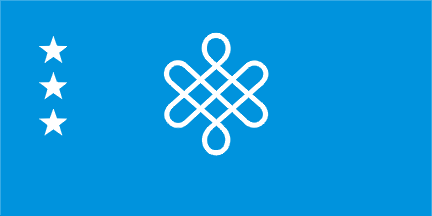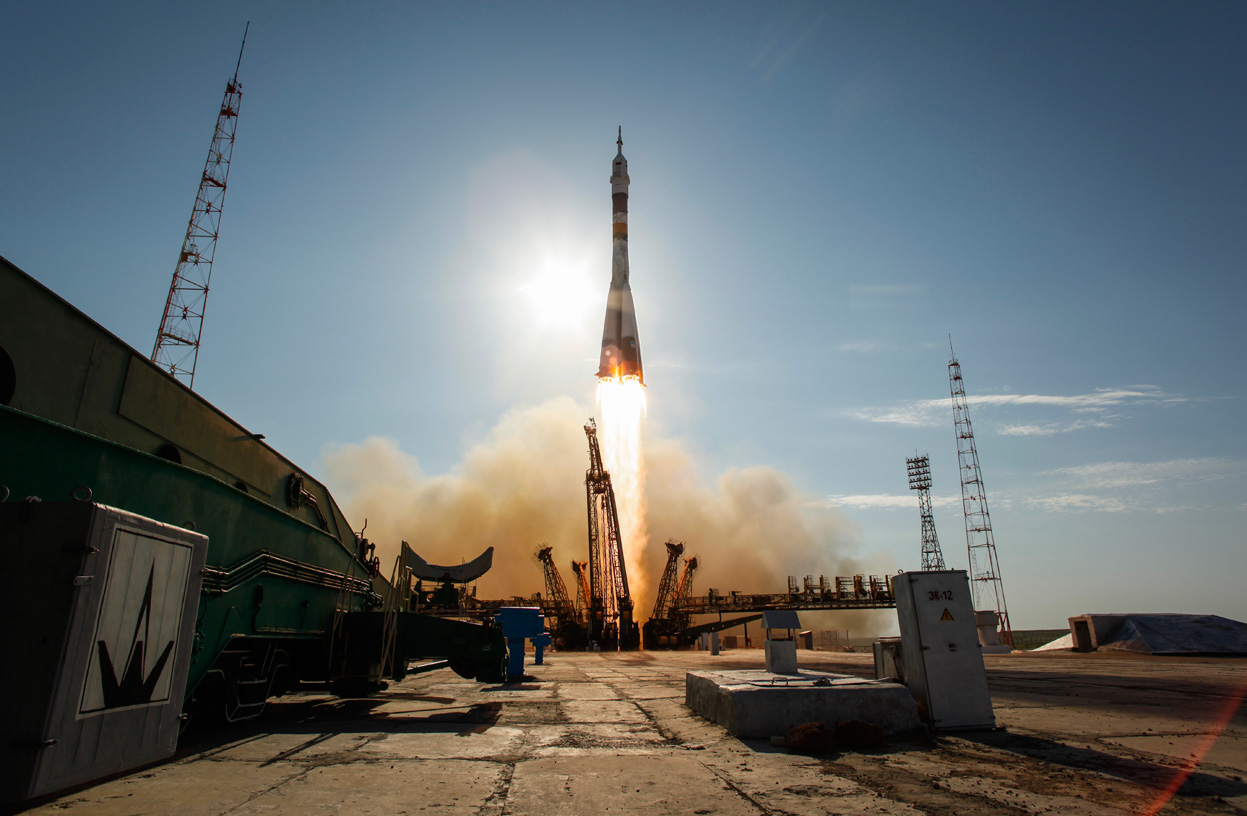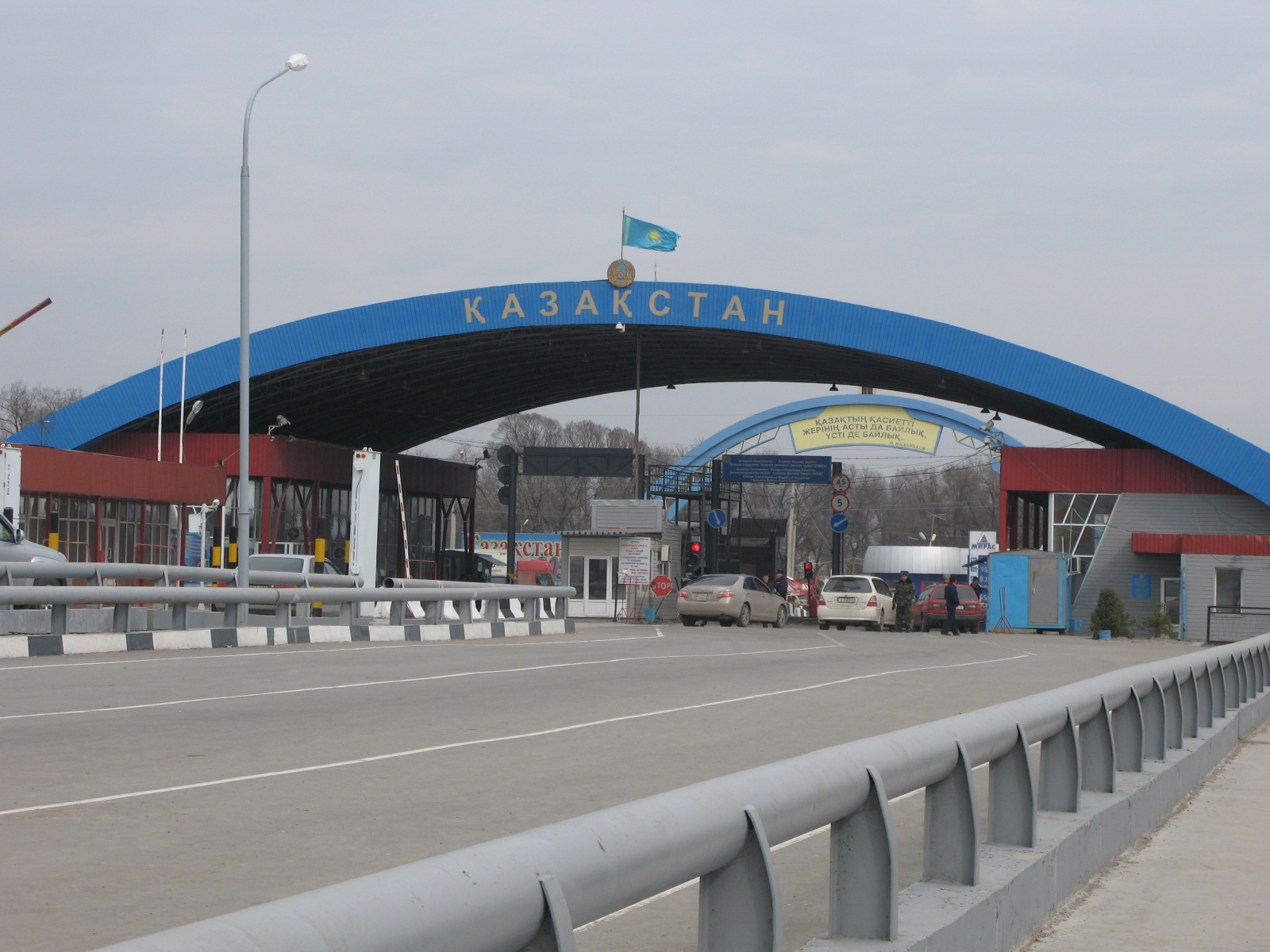1. Soviet Kazakhstan
Kazakhstan was the last state to abandon the Soviet Union in 1991. Kazakhstan had the largest Russian population from the Central Asian Soviet states. Kazakhstan was the location of the space center Baikonur Cosmodrome and Soviet Union's nuclear weapons. Since the collapse of the Soviet Union, Nursultan Nazarbaev has been the president of Kazakhstan.
There was a confusion with Kazakhstan's name in the beginning of the Soviet era. Kazakhstan was called the Kirghiz ASSR and Kyrgyztan was called Kara-Kirghiz Autonomous Oblast. Later in 1925 Kazakhstan was renamed Kazakh SSR and in 1926 Kyrgyzstan became Kirghiz ASSR.
Since the 500s Göktürks Turkic nomad empire flourished until the 700s in the current Kazakhstan and other countries.
 |
| Göktürk Empire, split into eastern and western parts |
 |
| Uyghus Empire |
 |
| The flag of the Great Horde of Kazakhs |
In 1718 the last leader of the Kazakh Khanate, Tauke Khan, died and the Empire was split into three different Khanates, called Great jüz, Middle jüz and Little jüz. At the same time Russia was expanding and in 1731 it made a protection agreement with Little jüz and later with the other two Khanates which all eventually lost their independence and were merged into Russia. Finally the Russian Tsar rejected renaming new Khans to the Khanates and in 1847 the Kazakh Khanates were disestablished by the Russian Empire.
3. World's Longest Continuous Border
Kazakhstan and Russia have the longest continuous border between two countries with a length of 7591 km. Both of the countries are huge, Russia is overwhelmingly the biggest country in the world and Kazakhstan is the biggest landlocked country and 9th biggest in the world.
The US-Canadian border is 8891 km long which is the longest total border length of two countries. 2475km of this border is between Alaska and Canada.
4. People of Kazakhstan
About 63% of the population are Kazakhs
About 23% of the population are Russians
The rest are Uzbeks, Ukrainians and Germans
Kazakhs are a Turco-Mongolian tribe whose language hasTurkic origins and they are Moslems
Kazakhstan was the place where German people from Ukraine, Volga and Belarus were forced to move during the second world war as well as Crimean Tatars, Koreans and other minority ethnicities
5. Natural resources
Kazakhstan is the richest country in Central Asia. This is largely due to Kazakhstan's vast natural resources like oil, gas and different minerals. Kazakhstan produces a lot of copper, coal and oil. It's the world's biggest uranium exporter, although some other countries have bigger uranium reserves. Kazakhstan is also one of the leading grain exporters with its 14 million hectares of wheat fields.
500s Göktürk Khanate ruled inner Asia
700s The Turkic Khanate is destroyed and overthrown by the Uighurs
1200s Uighur Kingdom is destroyed by the Mongol conquests
1456 The Kazakhs establish the state of Kazak Horde with Kerei Khan as their leader
1500s Kazak Horde covers the whole southern Siberia
1718 Kazak Horde splits into three Khanates after the death of Tauke Khan: Great jüz, Middle jüz and Little jüz
1731 Little jüz became a Russian protectorate being followed by the two other Khanates, which all lost their independence
1820s Russian Tsar rejected appointing new Khans to the Khanates
1840s The Kazakhs start uprising against Russia with the lead of Kenesary Khan
1847 Kenesary Khan is defeated and the Kazakhs lose the rest of their autonomy
1861 After freeing the slaves in Russia about million Russians and Ukrainians move to Kazakstan taking the grazing lands belonging to the Kazakhs
1916 Discontent against Russia escalates into a rebellion, which is suppressed violently as 150,000 people die
1917 After the Russian Revolution Alash Horde party demands for independence but Russia's White army defeats the Alash Horde
1919-20 After the civil war the Bolsheviks get the power in Russia and make Kazakhstan a part of the coming Soviet Union
1925 The country's name is changed into Kazakhstan
1930s Over million people died as the grazing lands and farms were collectivized
1986 Violent demonstrations in Alma-Ata after the Russian Gennadi Kolbin had become the leader of the Kazakh communist party
1989 Nursultan Nazarbaev replaces Kolbin as the leader
1991 Soviet Union is dissoluted and Kazakhstan becomes independent
1992 Kazakhstan got a new flag
1997 The capital city is transferred from Alma-Ata to Astana in the north
2011 Violent demonstrations in the Zanaozen oil areas in the north
2011 Kazakhstan joined a customs union with Russia and Belarus
1997 The capital city is transferred from Alma-Ata to Astana in the north
2011 Violent demonstrations in the Zanaozen oil areas in the north
2011 Kazakhstan joined a customs union with Russia and Belarus
Sources:
https://en.wikipedia.org/wiki/Kazakh_Khanate
https://en.wikipedia.org/wiki/Kazakhstan
"Maailman maat liput ja historia" by Kimmo Kiljunen
https://en.wikipedia.org/wiki/Kazakhstan
"Maailman maat liput ja historia" by Kimmo Kiljunen










No comments:
Post a Comment